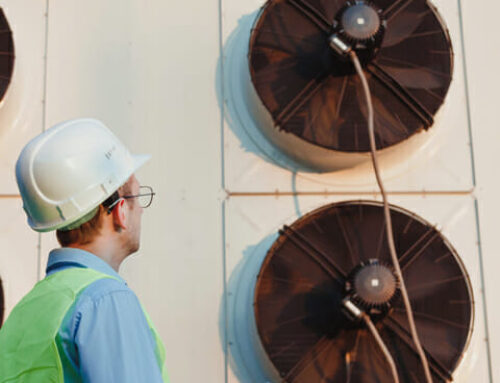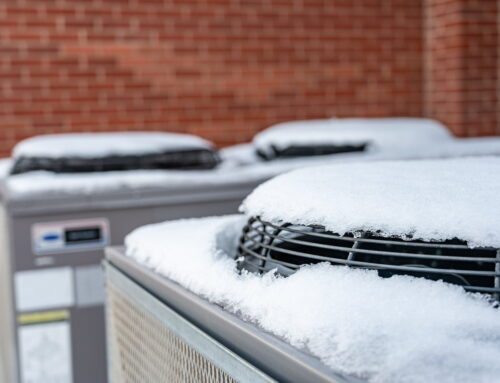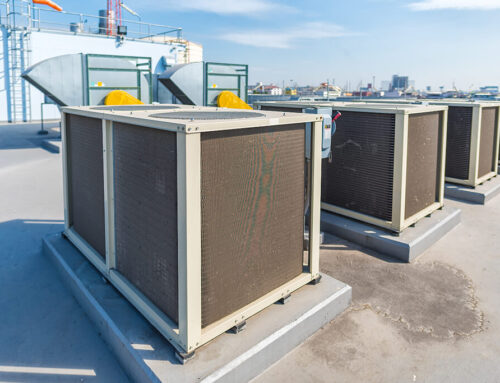Gone are the days when heating, cooling, and ventilation systems were a luxury in a house, reliant on electricity and refrigerant lines. Today, an efficient HVAC package unit installation, with proper ventilation and refrigerant lines, is almost as fundamental as the roof over your building or house. As you navigate the complexities of choosing and installing these all-in-one climate control solutions for your house, it’s crucial to understand their significance in providing year-round comfort and the importance of proper placement and information. This guide strips away the confusion, offering you clear information on selecting and setting up your HVAC package unit in your house—ensuring that tranquility and optimal temperatures prevail in your space, with proper placement advised by a technician.
Preparing for Your HVAC Package Unit Installation
Tool Gathering
Before you begin the installation of your new HVAC package unit with aux heat, it’s essential to gather all necessary tools, equipment, and warranty information. You will need a variety of hand tools, such as screwdrivers, wrenches, and pliers. It is also important to have electrical testing equipment with aux heat if you are planning to handle wiring yourself.
Make sure that all your equipment is in good working order. This includes ladders for reaching high places and safety gear like gloves and goggles. A proper set of tools ensures a smooth installation process.
Area Clearance
The next step involves clearing the installation area. Remove any debris or obstructions that could interfere with the work space around your home’s new hvac system location.
This might mean moving outdoor furniture or trimming back plants near where the HVAC unit will sit on its cement pad or frame. Ensure there is enough room for technicians to move freely and safely during installation.
Code Review
Understanding local building codes is crucial before installing an HVAC package unit in your house. Check if permits are required by contacting local authorities or hiring a professional electrician familiar with building regulations related to heating systems.
It’s wise not only to review these requirements but also secure any needed permits prior to starting work on installing refrigerant lines or other components of your package unit.
Determining the Right Size for Your HVAC Package Unit
Square Footage
The first step in sizing your HVAC package unit is to calculate the space’s square footage. Measure each room’s length and width, then multiply these numbers together. Add up all the rooms’ areas to get the total square footage.
It is crucial not to guess this measurement as it can lead to an improperly sized system. An oversized unit can cause frequent cycling, wasting energy and increasing costs. Conversely, a too-small system will struggle to maintain comfortable temperatures.
Climate Factors
Next, factor in your region’s climate and your home’s insulation quality. These elements significantly affect how hard your HVAC system must work.
In hot climates or poorly insulated homes, you might need a more robust system than what square footage alone suggests. Likewise, cooler climates or well-insulated spaces may require less heating and cooling capacity.
To ensure accuracy beyond simple estimations:
-
Evaluate insulation levels.
-
Consider sun exposure.
-
Account for local weather patterns.
These steps help refine size requirements for optimal efficiency and comfort.
Load Calculations
For precise measurements, use a Manual J load calculation. This method takes into account various factors like:
-
Building materials.
-
Number of occupants.
-
Appliance heat output.
Professionals often perform this analysis because it provides detailed insights into your specific needs based on scientific data rather than rough estimates.
Choosing the Ideal Location for HVAC Package Unit Setup
Stable Foundation
Once you’ve determined the right size for your HVAC package unit, finding a stable foundation is crucial. The location must support the weight of your system without shifting. This prevents damage and maintains efficiency.
A concrete pad often serves as a solid base. It should be level to ensure proper operation and drainage. Uneven surfaces can cause units to work harder, leading to early wear.
Airflow & Noise
Proper airflow is essential for performance. The chosen place needs clear space around it. This lets air circulate freely and helps the unit cool or heat effectively.
Consider noise when selecting an area too. Place the unit away from windows or patios where noise could disturb you or neighbors.
Flood Avoidance
Lastly, avoid places with high flood risk or excessive moisture. Water can damage your system and lead to costly repairs.
Elevate the unit if necessary in areas prone to flooding. Ensure gutters and landscaping do not direct water towards it either.
Safety Measures During HVAC Unit Installation
Power Disconnection
Before touching any components of the HVAC package unit, it is crucial to ensure all power sources are disconnected. This step prevents electric shocks and protects both you and your equipment.
Cutting the power supply is simple. Locate your home’s main circuit breaker box. Flip off the switch that corresponds to the unit’s location. Always double-check with a voltage tester.
Protective Gear
Wearing protective gear is non-negotiable during installation. Gloves protect hands from sharp edges and insulation material, which can cause irritation or cuts.
Safety eyewear shields eyes from dust, debris, or accidental sprays that occur while handling refrigerants or other chemicals in the system.
Manufacturer Guidelines
Following manufacturer guidelines ensures a correct setup process for your HVAC package unit installation. It helps avoid common mistakes that could damage new equipment or void warranties.
Adhere strictly to provided instructions on component placement, wiring, and testing procedures. If unsure about any step, consult professional help rather than risking improper installation.
Step-by-Step Installation Process for HVAC Package Units
Mounting Preparation
Mounting the package unit is the first step. Begin by securing a mounting pad or brackets. This ensures stability for your unit. The location should be level and sturdy.
Next, position the package unit onto the pad or brackets carefully. Ensure it’s properly aligned before moving on to wiring.
Electrical Connection
Now, connect electrical wiring to your HVAC package unit. Follow schematics closely for safety and functionality. Incorrect wiring can lead to malfunctions or hazards.
Use wire nuts and electrical tape to secure connections. Double-check every connection against the installation manual provided with your package units.
Ductwork Attachment
The final major step involves attaching ductwork. Start by aligning ducts with the unit’s ports.
Seal all joints meticulously to prevent air leaks which reduce efficiency and performance of your HVAC system.
Below are key points in this process:
-
Position mounting pad/brackets on a solid base.
-
Align package units correctly during placement.
-
Connect wires precisely as per schematic diagrams.
-
Seal ductwork joints thoroughly after attachment.
Following these steps will ensure that your HVAC package unit installation is successful, safe, and efficient, leading you towards comfortable indoor temperatures throughout any season.
Ensuring Proper Ductwork Compatibility and Upgrade
Duct Inspection
Before installing a new HVAC package unit, it’s essential to inspect the existing ductwork. This step ensures that the ducts can support your new system effectively. Look for signs of wear or damage. If you find holes or leaks, they must be sealed to prevent energy loss.
Proper insulation is also crucial for maintaining efficiency. Insulate any exposed ducts to keep the air at its intended temperature as it moves through your home.
Duct Modification
The next step involves making sure that the size of your current ductwork matches with the specifications of your new HVAC unit. Incorrect sizing can lead to poor performance and increased energy bills.
If adjustments are needed, resizing may involve either expanding or reducing sections of the ducts. It’s important to get this right; otherwise, you might face issues like uneven heating or cooling in different parts of your home.
Here are some actions you might need to take:
-
Seal any gaps using mastic sealant or metal tape.
-
Add extra layers of insulation around ducts where necessary.
-
Adjust dimensions by replacing certain sections with larger or smaller pieces.
Remember, proper ventilation is key not only for comfort but also for health reasons. Make sure that airflow is balanced throughout all rooms after modifications are made.
Post-Installation Checklist for HVAC System Efficiency
Thermostat Check
After ensuring the ductwork is compatible, it’s crucial to verify thermostat operation. This involves checking if the thermostat turns on and off as set. It also needs calibration for accurate temperature readings.
To check this, adjust your thermostat to a specific temperature. Wait and observe if the HVAC system responds correctly. If not, recalibration or repair may be needed.
Refrigerant Levels
Another key step is to check refrigerant levels in your new HVAC package unit installation. Correct refrigerant levels are vital for peak performance and energy efficiency.
Technicians should measure these levels using specialized tools. If they find discrepancies, they’ll add or remove refrigerant accordingly.
Cycle Testing
Lastly, testing system cycles ensures all parts work together well after installation. Turn on the system and watch it go through a full cycle of heating or cooling.
Listen for unusual noises and look out for inconsistent temperatures during this test. Any issues could mean further adjustments are necessary before you can enjoy efficient operation from your new setup.
When to Seek Professional HVAC Installation Services
Local Codes
Professionals know the local regulations. They ensure your installation meets all codes. This is crucial for safety and compliance.
Local laws often mandate licensed installers for HVAC systems. They understand the rules and can navigate permits. Skipping this step might lead to fines or unsafe installations.
Complex Ductwork
Complex ductwork requires expert skills. Professionals handle modifications with care.
If your home needs new ducts, professionals will design an efficient system. They’ll make sure it fits well with your space and needs. Doing this wrong could reduce system efficiency or cause damage.
Electrical Safety
HVAC units need correct electrical connections to work safely and properly.
Experts are trained in handling these connections correctly. If you’re unsure about wiring, always call a professional. Mistakes here can be dangerous or costly in repairs later on.
Closing Thoughts
You’re now armed with the essentials for a smooth HVAC package unit installation. From sizing it right to ensuring your ductwork is up to snuff, you’ve got the blueprint for success. It’s about creating comfort in your space with efficiency and safety at the forefront. Imagine the peace of mind as your new system hums along, thanks to your due diligence.
Ready to take the plunge? Don’t hesitate to call in the pros for that expert touch. They’ll fine-tune your setup, leaving you cool or cozy, depending on what Mother Nature throws your way. Reach out today—your ultimate home comfort awaits just around the corner!






